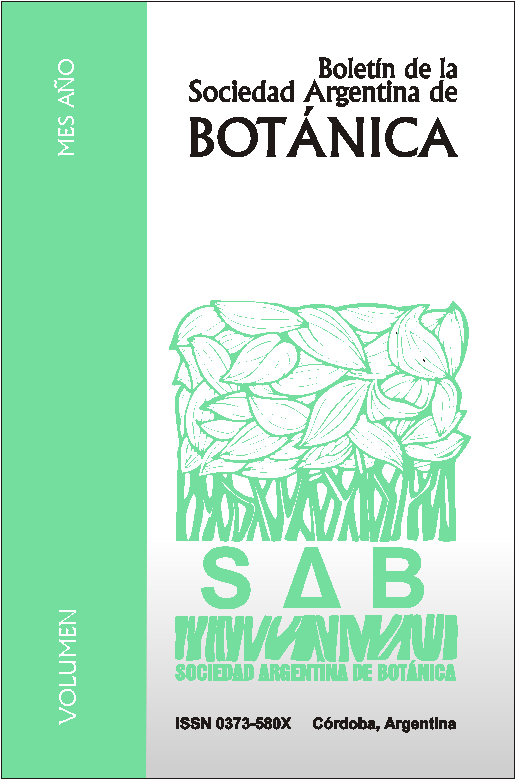Ramorinoa girolae (Fabaceae) forest structure in Sierra de Pie de Palo, San Juan (Argentina).
DOI:
https://doi.org/10.31055/1851.2372.v49.n2.7860Keywords:
Basal diameter, conservation, Ramorinoa girolae, vulnerable species, woodland structureAbstract
Ramorinoa girolae (Fabaceae) forest structure in Sierra de Pie de Palo, San Juan (Argentina).Ramorinoa girolae Speg. (Fabaceae), commonly called “Chica”, is a small tree endemic to Argentina. Owing to its restricted geographical distribution, slow growth, and poor fire resistance, R. girolae was categorized as vulnerable. In the present study, the size structure and health status of a R. girolaepopulation was analyzed in the Pie de Palo hill, San Juan, Argentina. We sampled 94 trees in eight 1000 m2 plots (average plot density 117.5 trees ha-1), and classified the health status of each tree into three categories: “very good”, “good” and “bad”. In general, the health condition of R. girolae was good, with 31.91%, 57.44% and 9.57 % of the trees in each category, respectively. The highest number of trees was found in the topographic ‘slope’ position (N=55). Average tree height was 4.05±1.47m with a high number of semi-decumbent trees (N=39). The highest number of individuals was recorded between 10-40 cm basal diameter and only three offshoots were less than 10 cm. This observation suggests an overall lack of “chica” regeneration in the last decades. Future conservation and management plans should aim to investigate regeneration patterns of R. girolae in order to identify key ecological factors for in situconservation of this species
Downloads
Issue
Section
License
Provides immediate and free OPEN ACCESS to its content under the principle of making research freely available to the public, which fosters a greater exchange of global knowledge, allowing authors to maintain their copyright without restrictions.
Material published in Bol. Soc. Argent. Bot. is distributed under a Creative Commons Attribution-NonCommercial-ShareAlike 4.0 International license.





